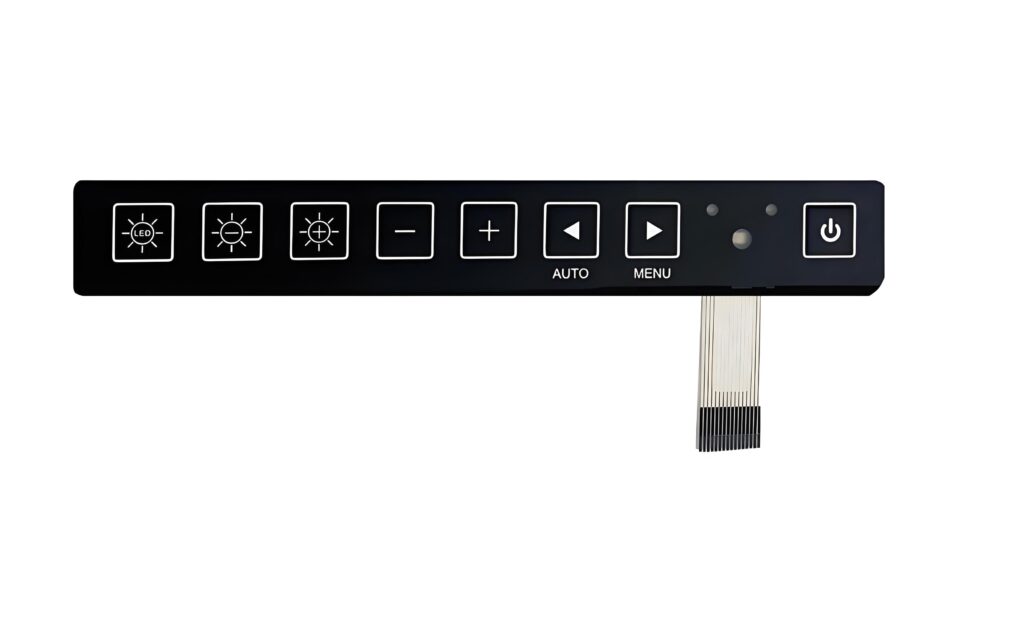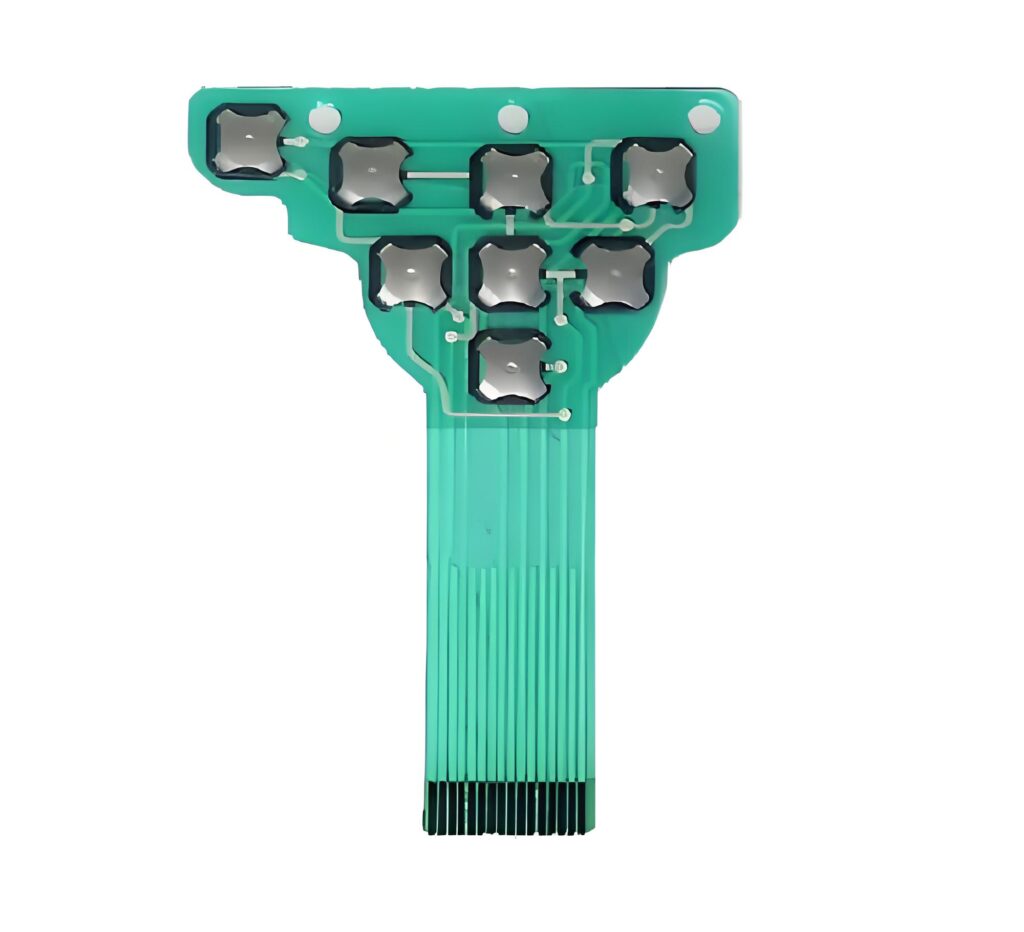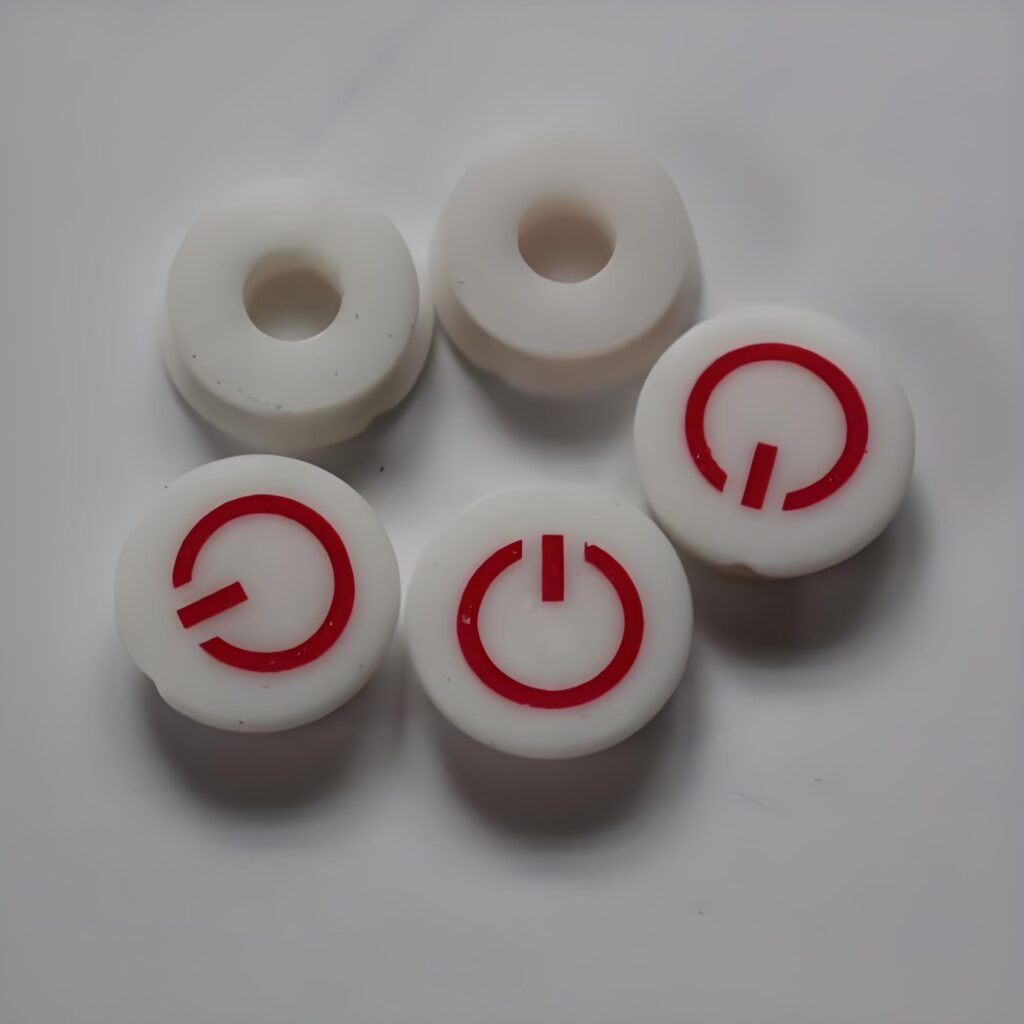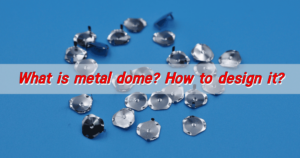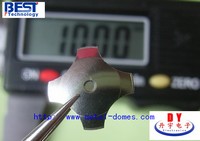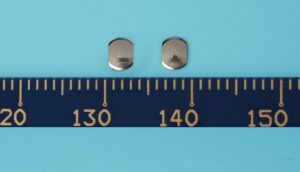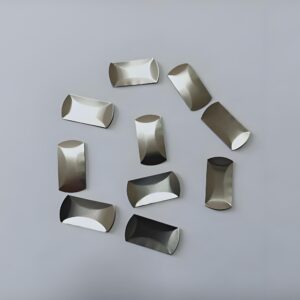A rubber keyboard is a keyboard made mainly of rubber material. It usually consists of a rubber key, a rubber base, and an internal circuit. When a user presses a key on a rubber keyboard, the rubber switch triggers the corresponding circuit and generates an electrical signal, thereby realizing the input function. The sensitivity and reliability of the rubber switch determine the response speed and accuracy of the keyboard.
What is a rubberized keyboard?
A rubber keyboard refers to a rubber switch, which is a type of switch that uses the special properties of rubber materials to achieve on-off circuit control. A rubber switch is mainly composed of two parts: a rubber key and a conductive gasket. When a user presses a rubber key, the deformation pressure generated by the rubber key is transmitted to the conductive gasket, pressing it tightly, thereby achieving on-off control of the circuit.
The working principle of a rubber switch is based on the elasticity and conductivity of the rubber material. When an external force acts on the switch, the rubber material will deform, and this deformation will change the distance between the conductive particles on the conductive gasket, thereby affecting the size of the resistance and achieving on-off control of the circuit.
How to make a rubber keypad?
Design and planning: clarify the purpose, function, size, shape and key layout of the rubber keyboard, and draw the design drawing.
Material preparation: select rubber materials (such as silicone rubber, etc.) according to the needs, and prepare auxiliary materials such as color powder, pigment, adhesive, release agent, etc.
Mold making: design the mold according to the design drawing, consider the rubber fluidity and demolding method, and make and debug it with metal or high-strength plastic.
Rubber molding: put the rubber material into the mold after pretreatment, and vulcanize it in the vulcanizer according to appropriate parameters.
Post-processing: demold carefully, trim the burrs and clean the impurities.
Key assembly: install the keys with adhesive, and make circuit connections (such as welding and crimping) if there are circuit functions.
Quality inspection: check the color, surface, and character logo of the appearance, and test the key feel, response speed and circuit conductivity of the function.
Packaging and storage: package with protective materials, store in a dry, ventilated and cool place to avoid squeezing and collision.
How do rubber keypads work?
The working principle of rubber keyboard is mainly to realize the conduction and disconnection of the circuit through the characteristics of conductive rubber, so as to complete the signal transmission, as follows:
State when the key is not pressed:
When the rubber keyboard is not pressed, the conductive rubber inside the keyboard is in the initial position. Conductive rubber usually has a layer with a raised part, the raised part is conductive, and the interconnected flat part is not conductive. At this time, the conductive rubber is separated from the circuit board contact below, the circuit is disconnected, and no signal is transmitted.
State when the key is pressed:
When the user presses a key on the rubber keyboard, the rubber material will deform elastically. The rubber raised part corresponding to the key will move downward and contact the corresponding contact on the circuit board. Since the raised part is conductive, the originally disconnected circuit is connected.
Signal transmission and recognition:
When the circuit is connected, an electrical signal will be generated. This electrical signal will be transmitted to the processor of the computer or other electronic device through the circuit on the circuit board.
The processor will identify which key is pressed according to the pre-set coding rules, and convert the corresponding key information into instructions or data that the computer can understand.
State after the key is released:
When the user releases the key, the elasticity of the rubber material will restore it to its initial state, the raised part of the conductive rubber will bounce up and separate from the contact on the circuit board again, and the circuit will return to the disconnected state, waiting for the next key operation.
What is the HS code for rubber keypad?
The main HS codes for rubber are as follows:
1. HS codes for natural rubber and synthetic rubber: The HS codes for natural rubber and synthetic rubber are 40021911001.
2. HS codes for rubber products: The HS code for rubber products is 40169310002.
3. HS codes for rubber rings: The HS code for rubber rings is 401699102.
These codes are used to identify and classify rubber and its products in international trade to ensure the accuracy of tariffs and regulations.
How do rubber dome keyboards work?
The working process of the rubber dome switch is as follows:
Initial state: When there is no external force pressing, the rubber dome is in a naturally stretched state. At this time, the rubber dome is separated from the contact or electrode in the circuit, the circuit is disconnected, and no current flows.
External force pressing: When an external force is applied to the rubber dome switch, the rubber dome will undergo elastic deformation. As the external force increases, the dome is gradually compressed and bent downward. Since the rubber dome has a certain elasticity and conductivity, it will gradually approach or contact the contact or electrode in the circuit during the deformation process.
Circuit conduction: When the rubber dome is in full contact with the contact or electrode in the circuit, the current can form a path in the circuit through the rubber dome, so that the circuit is in a conducting state. At this time, the current can flow in the circuit to realize the corresponding control function of the electronic device, such as triggering a certain operation, opening or closing a circuit, etc.
External force removal: When the external force is removed, the rubber dome is no longer under pressure, and its own elasticity will restore it to its initial natural stretch state. As the shrapnel recovers, it gradually separates from the contacts or electrodes in the circuit, the circuit is disconnected again, and the current cannot continue to pass.
What type of keyboard lasts the longest?
The metal shrapnel membrane switch has the longest service life. The metal shrapnel membrane switch has the advantages of long life, low resistance, stable performance, sensitive response, and uniform force. Its service life can usually reach five years or more.
In addition, the metal shrapnel membrane switch has a large contact area to ensure the conductivity, and the key feel is good, the force is uniform, and the stroke accuracy is high. A crisp sound can be heard during operation, avoiding repeated operations due to the buffer time of some equipment.
Comparison of the service life of different types of membrane switches:
Metal shrapnel membrane switch: long life, usually up to five years or more, and may even exceed five years under normal use.
Hot-pressed convex feel membrane switch: high life, can reach more than 500,000 times, but the mold cost is high, and use in a high temperature environment may cause the key force to weaken.
Flat touch membrane switch: The key life is long, up to one million times, but there is no operational feel, which is easy to cause repeated operation or misoperation.
In short, as a unique input device, rubber keyboard is widely used in various fields with its waterproof and dustproof, soft and comfortable, portable and durable characteristics. As the core component of the rubber keyboard, the performance and quality of the rubber switch directly affect the overall performance of the keyboard.



